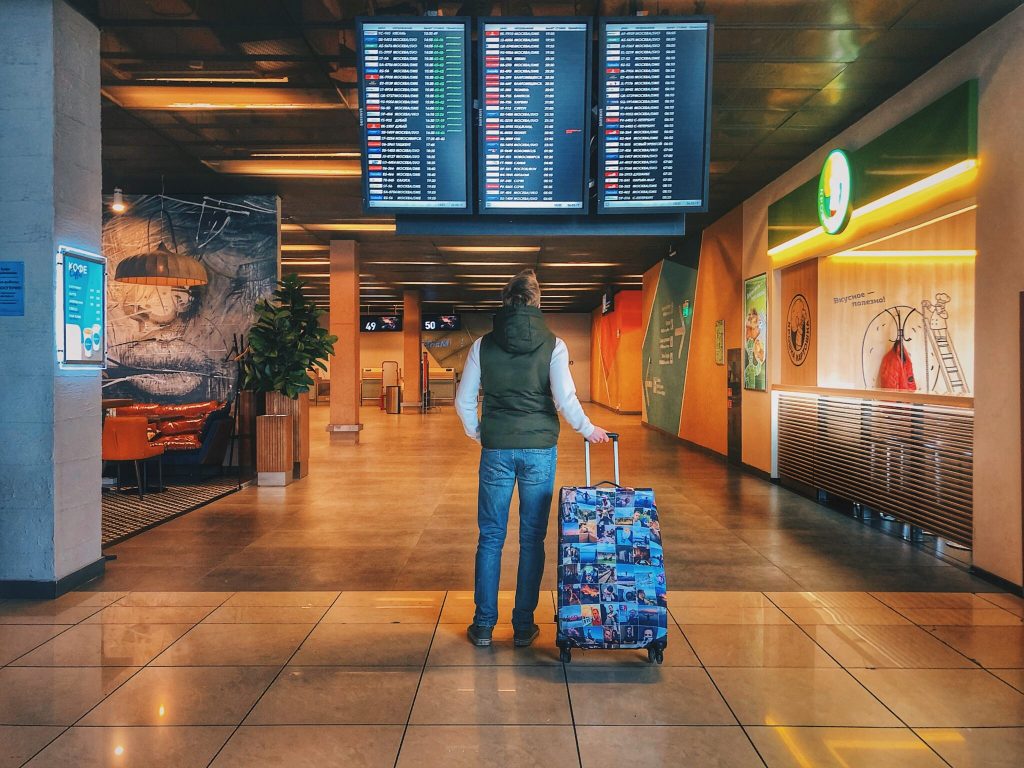When jetting off abroad or heading on a weekend away, you may think that your worst fear would be a delay. But, what about having your belongings stolen?
Just the thought of having your luggage snatched is enough to make your heart drop. In this article, Locks Direct will discuss common luggage theft techniques, tips to keeping your luggage safe and the best luggage padlocks that you can use to prevent theft.
Luggage Theft Tactics
The British Transport Police published four common luggage theft techniques:
1.The Early Bird
This is a common theft technique for train travellers, where the thief follows the victim onto the train, then leaves the train just before it departs, taking your luggage from the rack with them.
2.The Wait Lifter
This type of theft usually takes place in busy airports, train stations or bus stations. The thief will wait until you are distracted and leave your luggage unattended. For example, when going to order a coffee or walking to a bin. They will then quickly strike, taking your luggage with them whilst your back is turned.
3.The Sleeper
This theft usually takes place on the train or on a bus, where the thief waits until you fall asleep, then will quickly snatch your luggage as they leave at the next stop.
4.The Blind Spot
This takes place on public transport where the thief waits to target someone who has left their luggage out of view. They will wait until this happens and then strike quickly.
Tips On How To Keep Your Luggage Safe

There are many things that you should do to keep your luggage safe when travelling.
Here are a few tips from Locks Direct:
● Possibly the most simple, but keep your luggage close to you and within view. On busy transport, it may be worth wrapping the strap around your arm or leg to prevent it from being snatched.
● If you are wearing a backpack on transport, remove this and hold it in front of you when travelling, this will prevent someone from opening it without your knowledge. Or better still, use a secure backpack padlock to prevent access behind your back.
● Remove valuables from your luggage before placing it in storage compartments or a luggage rack. Where possible, use a safe. For example, many train stations, airports, or holiday destinations will offer the option to leave your luggage in a safe rather than dragging it around with you where it could be potentially snatched by thieves.
● Use a strong, secure luggage lock. This will prevent access to your luggage and could act as a deterrent from theft, as the lock will be visible.
● We know how much of a struggle a long journey or commute can be, so if you are taking a snooze, make sure that your luggage is attached to you. Such as being held or wrapped around your leg. Also make sure that any zips are securely locked to prevent your luggage being tampered with whilst you nap.
● Opt for brightly coloured suitcases or suitcase straps. Then if your suitcase is taken on purpose or by mistake it will be easier for you or the authorities to spot. This also works as a deterrent as thieves want to stay on the down low.
Keep Your Luggage Securely Locked
We have all heard horror stories of travellers who have had high-value belongings stolen from their luggage. Or even worse, items smuggled into their luggage without their knowledge. The best way to avoid this it to use a reliable luggage padlock.
Locks Direct offer a range of highly secure luggage padlocks, specially designed to keep your luggage protected from content theft. Our luggage padlocks are all TSA approved, which means that they allow security authorities to check your luggage without causing any damage.
Our recommended top five TSA approved luggage locks are as follows:
1.Squire TSA35 Combination Padlock- A strong, 3-wheel combination padlock for suitcases, sports bags and briefcases.
2.Abus 155/20 Combination Padlock- A small combination padlock, perfect for on-the-go travel and securing smaller luggage, such as rucksacks or on-board baggage.
3.Abus 155/30 Combination Padlock- A small 3-wheel combination padlock that offers simple-to-use unlockable and relockable protection for tourists in pick-pocket areas. This is the ideal luggage lock for using on train or bus journeys.
4.Abus 155/40 Combination Padlock- This is a 4-wheel combination lock variation of the small Abus luggage lock. This extra secure luggage padlock is best for on-the-go travel use, for protecting higher value items.
5.Squire TSA20T Twin Pack- The Squire twin pack of luggage locks provides good value, great for a couples holiday or trip away with a friend. These specially designed luggage padlocks are a traditional lock and key style.

